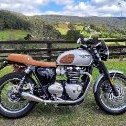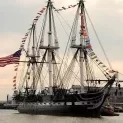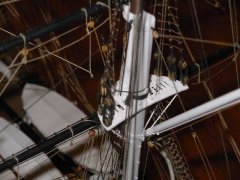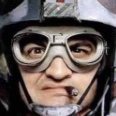-
Posts
675 -
Joined
Reputation Activity
-
 David Lester got a reaction from Snug Harbor Johnny in Mayflower by David Lester - FINISHED - Model Shipways - Scale 1:76
David Lester got a reaction from Snug Harbor Johnny in Mayflower by David Lester - FINISHED - Model Shipways - Scale 1:76
Good Morning,
The next order of business for the hull was the addition of the bulwarks, which were planked on the inside prior to installation. Then the waterways and the stanchions.
I decided to add the grating to the main deck at this point too -
I discovered that the stanchions tend to pop off pretty easily, so I decided to add some wire to secure the ones that will support the pin rails and kevels. I'll also secure the pin rails and kevels to the stanchions with wire when I get to that point. I'll do that before moving on to the planking of the upper hull.
That's all for now, many thanks for checking in.
David
-
 David Lester got a reaction from EricWilliamMarshall in Mayflower by David Lester - FINISHED - Model Shipways - Scale 1:76
David Lester got a reaction from EricWilliamMarshall in Mayflower by David Lester - FINISHED - Model Shipways - Scale 1:76
I've been working on various aspects of this build, in no particular logical order. This morning I turned my attention to the kevels.
There are eight kevels on this ship and I don't really care for the cast kit-supplied ones, so I set out to make some wooden ones. Here's how I approached it.
I could see that there are two ways to do this. One would be to create two holes or slots in the cross member at the right angle and then slide the uprights through. Since I don't have a mill or a drill press and I'm working with basswood, I knew that would be an exercise in frustration, so I decided to try a second method, which is to laminate the cross member on the uprights.
I drew some lines establishing the dimensions on a piece of paper and covered them with double-sided tape.
I placed the first upright in position and trimmed the bottom of it along the pencil line -
I then added the second upright and the three pieces of the cross member. There's no glue at this point; only the tape is holding everything in place.
These pieces are all 1/32" x 1/16".
I then glued a piece across the cross member (1/16" x 1/16")
Peeling the assembly off of the tape. It's quite rigid by this point.
Then I added a second piece across the back of the cross member -
After some trimming and sanding. There may be some more sanding yet to do. I'm not sure if the cross member is still a bit too thick.
I think this method is going to work. Once they are all completely covered with rope coils, they should look just fine.😁
Thanks for checking in, much appreciated.
David
-
 David Lester got a reaction from EricWilliamMarshall in Mayflower by David Lester - FINISHED - Model Shipways - Scale 1:76
David Lester got a reaction from EricWilliamMarshall in Mayflower by David Lester - FINISHED - Model Shipways - Scale 1:76
I've been working away at my Mayflower on a number of different fronts at the same time.
I've finished the first layer of planking on the lower hull. Despite having a very blunt round bow, this isn't a very hard hull to plank. This kit actually includes a template to use to help "spile" the planks at the bow. I used it along with an iron and it worked like a charm. I have the lower hull sanded and filled. I happened to have some mahogany wood filler kicking around, so that's why it looks a bit odd, but it doesn't matter as it will all be covered up.
I started the boat, using my usual approach of cutting it in half in order to more easily carve out the interior. I read about this technique in another build log somewhere and have used it ever since. I recommend it for this type of boat. It works really well.
Once the interior's carved out, I just glue it back together.
Here's how I'm doing the windows. There are a number of very small windows on the Mayflower with a diamond pattern. This detail is just far too small for me to model, so another approach is needed. The instructions with the kit indicate that there is narrow white tape provided to be placed on a piece of acetate. I received the acetate, but there certainly was no white tape included, so I needed another solution.
My first thought was to get an extra fine white paint pen and draw the white lines on the acetate, but then another idea occurred to me. There is an image of the white lines on a black background in the instruction book which I photocopied, with the idea of just framing it into the window openings. The resulting image on regular paper didn't seem quite crisp enough to me, so I created a new image, using a graphics program on the computer. Then I printed in on a piece of photographic paper with a glossy finish. The result is very crisp and I think it will work just fine. To make the white frame around the window I placed some tape and painted it white.
Lest you think I'm brilliant for coming up with this, let me share with you how long it took me to figure one aspect of this out. I tried making the lines on the computer diagonally, but they wouldn't come out right; they had a small "stepped" effect which ruined the look. I had pretty much abandoned the idea altogether when days later, I awoke in the night and realized I could create the lines straight and then just cut the windows out on the diagonal! Duh!
This isn't a very difficult model, but there is one big challenge and that is the finish. Much of this model is shown as having a natural, rather than painted finish. This isn't too big a problem when working with nice wood, but in my experience, it can be a nightmare when working with basswood and this model is all basswood. It just never wants to take a stain evenly and I have never been happy with the results whenever I've used Minwax stain or something similar. So, I've been experimenting with paint to give a stained effect. I'm convinced this is the better way to go.
I just buy inexpensive acrylic paint - Americana Decoart - and it works well. I water it down and then experiment with different applications of different viscosities. I sand in between applications and if I've applied it too thickly, I sand it off almost completely. It's just a matter of trial and error.
Here I've used burnt umber, watered down with several coats applied, attempting to even out any huge differences in the boards. I then sealed it with a coat of amber shellac and gave it a light rubbing with steel wool, which knocked the sheen back. I'm happy with the result and for sure it's better than anything I could have done with stain.
These bulwark pieces get planked on the inside prior to being installed on the hull.
I used a similar approach for the deck, this time going for that sort of grey-taupe colour that decks often have. This time I won't seal it with shellac or poly, but use Tom Lauria's suggestion of just burnishing it with a piece of paper towel.
So that's where I'm at so far. Thanks for checking in.
David
-
 David Lester got a reaction from Canute in Light hearted reading ( if there is such a thing!)
David Lester got a reaction from Canute in Light hearted reading ( if there is such a thing!)
Try David Grann's newest book "The Wager"- an amazing story about the HMS Wager. Grann's research is impressive and his writing style is accessible. This led me to read his earlier books all of which are equally compelling.
-
 David Lester got a reaction from Aceman in Light hearted reading ( if there is such a thing!)
David Lester got a reaction from Aceman in Light hearted reading ( if there is such a thing!)
Try David Grann's newest book "The Wager"- an amazing story about the HMS Wager. Grann's research is impressive and his writing style is accessible. This led me to read his earlier books all of which are equally compelling.
-
 David Lester got a reaction from mtaylor in Light hearted reading ( if there is such a thing!)
David Lester got a reaction from mtaylor in Light hearted reading ( if there is such a thing!)
Try David Grann's newest book "The Wager"- an amazing story about the HMS Wager. Grann's research is impressive and his writing style is accessible. This led me to read his earlier books all of which are equally compelling.
-
 David Lester got a reaction from jpalmer1970 in Light hearted reading ( if there is such a thing!)
David Lester got a reaction from jpalmer1970 in Light hearted reading ( if there is such a thing!)
Try David Grann's newest book "The Wager"- an amazing story about the HMS Wager. Grann's research is impressive and his writing style is accessible. This led me to read his earlier books all of which are equally compelling.
-
 David Lester reacted to John Ruy in 1921 Bluenose by John Ruy - FINISHED - Model Shipways - 1/64 scale - Canadian Fishing Schooner
David Lester reacted to John Ruy in 1921 Bluenose by John Ruy - FINISHED - Model Shipways - 1/64 scale - Canadian Fishing Schooner
Foremast - Mast Coat, Pin Saddle, Gooseneck…
Kit provided laser cut rings have to large of an inside diameter. Solution: drill out a 1/2” dowel with a 5/16” bit and slice two mast coats.
Utilized the laser cut rings for the pin saddle.
Carved chocks from a mahogany strip.
Here is a picture of the gooseneck on the Bluenose II. NOTE: Oringinal Pin Saddle no longer there on the replica.
Created the gooseneck from provided brass stop and wire as follows.
-
 David Lester got a reaction from zifnab in HMS Speedy by David Lester - FINISHED - Vanguard Models
David Lester got a reaction from zifnab in HMS Speedy by David Lester - FINISHED - Vanguard Models
Good Morning Everyone,
So here's an update on my progress -
I have pretty much finished the hull. The last things I added are the deck furnishings, the lower deadeyes and chainplates and I've located all of the eyebolts on the hull. Depending on how they will be used some are installed now and others just have their holes drilled at this point. The eyebolts on the deck are not glued in yet; it's often best to wait until their lines have been attached.
I have also been working on the masts and yards. I don't have any machine tools, so I rely on an xacto blade, sandpaper and calipers to taper the yards and I square up the ends of the masts freehand by eye. I know my results are never perfect, but I always enjoy this part of the build and I find the results are acceptable (to my eye, at least.)
One detail that I almost always omit is shaping the yards to an octagon at the centre. I have never been happy with my results and by the time I sand out the imperfections, it pretty much ends up round anyway. So I save myself a lot of aggravation and just skip it. (I haven't heard any complaints yet.)😄
I love using this cartridge paper for the iron bands on the mast. I always think it looks very realistic and the scale always seems better to me than using a brass strip. In the past I have used black construction paper, but this time I used the supplied cartridge paper.
I often have a bit of trouble getting the bands to wrap and stay level and if they are glued on, it's a bit messy relocating them. This time I first wrapped the mast with masking tape immediately below where I wanted the band to be and made any necessary adjustments with it. Then I glued the band on right next to the masking tape. This worked quite well.
Here's my "cheat" for attaching the line around the ends of the stunsail booms in a tidy way.
I drilled two holes in the bottom of the yard. The first one just went part way in and the second one right next to it went right through to the top.
I inserted the line into the first hole, wrapped it around the yard a couple of times, then pulled it taut from the top through the second hole. A dab of glue holds it in place and I snipped it off.
There is a tricky bit of rigging on the bowsprit. It's this loop with four deadeyes. I thought about how to do this quite a bit and studied how others approached this. In the end here is what I did -
I wrapped a piece of masking tape around the bowsprit and marked the locations of the four deadeyes -
Then I placed the masking tape on a piece of paper and extended the four location marks -
I seized the top deadeye in the centre of a line -
I then located the location of the other three deadeyes relative to the first one - two to one side of it and one to the other side -
Then I wrapped the whole thing loosely around the bowsprit and simply seized the two loose ends together. Once the seizing was tight, I just pulled on the two ends, snugging it up to the bowsprit. A dab of glue holds the seizing in place.
It took me two attempts to get it right. The first time my spacing was off a little bit, but I could tell that the system was working, so a second attempt with a little bit of tweaking did the trick.
Many thanks for looking in, "likes" etc.
We're all shovelled out now here in southern Ontario; I hope you guys in the eastern US are managing ok after your heavy snowfall.
David
-
 David Lester reacted to John Ruy in 1921 Bluenose by John Ruy - FINISHED - Model Shipways - 1/64 scale - Canadian Fishing Schooner
David Lester reacted to John Ruy in 1921 Bluenose by John Ruy - FINISHED - Model Shipways - 1/64 scale - Canadian Fishing Schooner
Thanks David… yep, I found the chain box on the plans. Lots of detail on sheet 4. Requires lots of study. 🧐 I too am impressed with the plans from Model Shipways. John
-
 David Lester got a reaction from GGibson in 1921 Bluenose by John Ruy - FINISHED - Model Shipways - 1/64 scale - Canadian Fishing Schooner
David Lester got a reaction from GGibson in 1921 Bluenose by John Ruy - FINISHED - Model Shipways - 1/64 scale - Canadian Fishing Schooner
Hi John,
Actually, that chain box is on the MS plan. It's on sheet 4, lower left hand corner of the page. These old photos of the Bluenose are great and I am quite impressed with how accurate the MS model seems to be.
Yours is looking great!
D
-
 David Lester reacted to John Ruy in 1921 Bluenose by John Ruy - FINISHED - Model Shipways - 1/64 scale - Canadian Fishing Schooner
David Lester reacted to John Ruy in 1921 Bluenose by John Ruy - FINISHED - Model Shipways - 1/64 scale - Canadian Fishing Schooner
Anchors and anchor chain…
Update: found the chain box on the detail sheet. 🧐
Cheers 🍻
-
 David Lester reacted to John Ruy in 1921 Bluenose by John Ruy - FINISHED - Model Shipways - 1/64 scale - Canadian Fishing Schooner
David Lester reacted to John Ruy in 1921 Bluenose by John Ruy - FINISHED - Model Shipways - 1/64 scale - Canadian Fishing Schooner
Windlass…
Photos of the original Bluenose from Nova Scotia Archives. Very helpful resource.
Many more details coming…
These archives photos are great. Notice the chain box just aft of the engine box. Not on the MS plan…
Cheers 🍻
-
 David Lester reacted to John Ruy in 1921 Bluenose by John Ruy - FINISHED - Model Shipways - 1/64 scale - Canadian Fishing Schooner
David Lester reacted to John Ruy in 1921 Bluenose by John Ruy - FINISHED - Model Shipways - 1/64 scale - Canadian Fishing Schooner
Details continued…
Anchor Lashing Ring and Random Ringbolts for tie downs, etc…
Cheers… 🍻
-
 David Lester reacted to John Ruy in 1921 Bluenose by John Ruy - FINISHED - Model Shipways - 1/64 scale - Canadian Fishing Schooner
David Lester reacted to John Ruy in 1921 Bluenose by John Ruy - FINISHED - Model Shipways - 1/64 scale - Canadian Fishing Schooner
Details Bulwarks inboard…
Fair Leads for Balloon Jib and Jib Downhauls.
Fair leads P/S for Jib Sheet.
Snatch Blocks P/S for Balloon Jib Sheet
Cheers 🍻
-
 David Lester reacted to John Ruy in 1921 Bluenose by John Ruy - FINISHED - Model Shipways - 1/64 scale - Canadian Fishing Schooner
David Lester reacted to John Ruy in 1921 Bluenose by John Ruy - FINISHED - Model Shipways - 1/64 scale - Canadian Fishing Schooner
Main Rail…
Monkey Rail…
Buffalo Rail…
Deadeyes…
Shoutout to @David Lester for your research and build logs.
Stern…
Bow…
Finishing up deadeyes…
Painting out to top Rails…
Placing eyelets and belaying pins
She is getting there… All this fiddley stuff is tedious. Time to take a break and scan over the drawings. I don’t want to miss any of the hardware on the inside of the bulwark, before I start on the deck furnishings. I know I still have some eyelets, rings and things to do.
Cheers 🍻
-
 David Lester reacted to ECK in HMS Pegasus by ECK - Amati/Victory Models - 1:64
David Lester reacted to ECK in HMS Pegasus by ECK - Amati/Victory Models - 1:64
So finally finished today.
I think this coming weekend I will start the Indy project. Have been staring at the box since I got it at the end of Feb and following with interest the builds of Kevin and Glenn (hope your back is getting better so you can get back to your project)
-
 David Lester got a reaction from etubino in Virginia Privateer by David Lester - FINISHED - Marine Model Co. - Restoration of approx. 60 yr. old model
David Lester got a reaction from etubino in Virginia Privateer by David Lester - FINISHED - Marine Model Co. - Restoration of approx. 60 yr. old model
Good Morning Everyone,
I'm making steady progress on the rigging. Ratlines are finished as well as the three yards on the foremast except for the braces, which I'll add at the end. Next is the fore gaff, then on to the main mast. Oh, and I have to replace a starboard backstay, which came apart due to the problem which I describe below.
One frustration with this model is the blocks. They are very small. The plan indicates three sizes of block - 5/32", 1/8" and 3/32". I sorted the blocks I removed from the model into those three sizes. I don't know who measured them initially, but if I compare them to my other blocks, they are all much smaller.
In the picture above, the top block is a 1/8" from my Constitution model, the middle one is this model's idea of a 1/8" and the bottom is the 3/32". They were even had to sort as the differences in their sizes are only marginal. In addition they are very rounded and I have found it difficult to seize them and have them stay in place. It's not so bad when it's still on the bench, but when it happens much later after being installed on the model it's beyond frustrating. In the end I've taken to deepening the grooves on the side with a small file and applying a dollop of glue to the sides of the block as well as the seizing. This seems to have solved the problem but even so, due to fat fingers, each one is taking me about twice as long as has been my experience on other models. However, because of their small size, they do look pretty good once in place.
Not too much left to finish this model off and I do need a break from rigging. Because most of the work on this restoration has been rigging and little hull work, it feels like I've been doing rigging forever having just finished rigging on my last model. I'm really looking forward to getting started on my next one and have some wood work to do and an extended respite from rigging.
David
-
 David Lester got a reaction from etubino in Virginia Privateer by David Lester - FINISHED - Marine Model Co. - Restoration of approx. 60 yr. old model
David Lester got a reaction from etubino in Virginia Privateer by David Lester - FINISHED - Marine Model Co. - Restoration of approx. 60 yr. old model
Hello Everyone,
A little more rigging progress to report. I've finished the standing rigging and have just started on the ratlines.
In an attempt to better control the tendency of the shrouds to pull inward, I'm trying the technique of tying every fourth ratline first. I've also drawn vertical lines on the paper guide where the two outer shrouds lie. It seems to be working quite well. By coincidence, the lined notepaper that I'm using is spaced exactly the same as the plans. The lines are on 6mm intervals, as are the plans.
I do have a rigging question that I hope someone can help me with. I'll also post this question under the rigging forum. The plans show a yard at the top of the main mast and I have never run across one just like this before. I assume it's unique to this kind of vessel -American topsail schooner. It's nearly vertical and it's very difficult to decipher from the plan how to attach it and how to rig it. I do know that where the plan indicates "A" that it's referring to a block, but apart from that it's pretty unclear what to do. There are four blocks "A" indicated. I know that the one in the lower right is unrelated (and it's actually a pair - marked "p/s") but the other three appear to be part of the rigging for this yard. Is anybody able to explain or even better illustrate what the setup is? I'd be most appreciative. I think I've figured out most of the other bits, but this one has me stumped. Many thanks.
Thanks again,
David
-
 David Lester got a reaction from etubino in Virginia Privateer by David Lester - FINISHED - Marine Model Co. - Restoration of approx. 60 yr. old model
David Lester got a reaction from etubino in Virginia Privateer by David Lester - FINISHED - Marine Model Co. - Restoration of approx. 60 yr. old model
I'm beginning to believe that the rigging for this yard is actually simpler than I've been imagining. It's been suggested in my other post under rigging questions that such a yard would be raised and lowered with the sail already in place on it, which makes sense to me. I think I'll seize a block to the mast near the top and seize a line around the centre of the yard. I'll pass the line through the block and belay it to a point on the deck yet to be determined. If I'm reading the plan correctly, it appears that there is a second block seized lower on the mast and a second line seized near the end of the yard, passed through the block and then belayed at the deck as well.
Although the plan doesn't show such a line, I may run one from the top of this yard to the end of the main gaff, which will put some tension on it, which may be necessary to for it to hold its position. The similar model in this photo shows such a line.
Thanks again,
David
-
 David Lester reacted to ECK in HMS Pegasus by ECK - Amati/Victory Models - 1:64
David Lester reacted to ECK in HMS Pegasus by ECK - Amati/Victory Models - 1:64
Lower shrouds done. My technique for ratlines is 2 hemostats and a 6 mm plank for spacing.
-
 David Lester reacted to Henke in HMS Agamemnon by Henke - Caldercraft - 1:64
David Lester reacted to Henke in HMS Agamemnon by Henke - Caldercraft - 1:64
Dear all,
Thanks for all the likes and comments. It has been a wile since last update (more modelling than build log). Agamemnon himself sits on the bow now. The bowsprit is getting finished. For the moment it is just dry fitted. The iron bands on the bowsprit I made from masking tape which I painted black before applying to the bowsprit. Instructions call out fore cutting stripes out of black paper but black painted masking tape was much easier. The lower part of the foremast was something I started with last weekend.
Best regards
Henrik
-
 David Lester got a reaction from TrunkMonkey in HMS Agamemnon by David Lester - Caldercraft - 1:64
David Lester got a reaction from TrunkMonkey in HMS Agamemnon by David Lester - Caldercraft - 1:64
I've been working in a very disorganized way, turning my attention from the stern to the bow to the hull and back again. Here are a few pictures of what I've been doing.
Here I've added the gallery windows and have done some more painting on the hull.
I created this elaborate system for organizing and painting the windows, but if I had it to do over again, I'd have just glued them in place unpainted first and then painted them after. Despite my careful application of several coats of white paint, once in place they still needed touch up and I had to file away paint from the corners of the muntins. So I ended up effectively painting them in place anyway, and it was surprising easy to do. Cutting in around the edges was not hard. I think I could have saved myself a lot of wasted effort.
It's starting to look like the Agamemnon -
Here I'm adding the first of the moldings. I was a bit intimidated at the prospect of working with these brass strips and I contemplated replacing them with Evergreen styrene strips. In the end, I decided against that as they can be very hard to glue neatly and I thought they would be hard to keep in a straight line. As it turned out, the brass is not difficult to work with, is very easy to glue in place and it looks pretty good.
Here's the first one painted -
Here is the first stage of the bow details -
That's all for now. Thanks again for checking in.
David
-
 David Lester got a reaction from Mr Whippy in HMS Agamemnon by David Lester - Caldercraft - 1:64
David Lester got a reaction from Mr Whippy in HMS Agamemnon by David Lester - Caldercraft - 1:64
Good Morning,
I have not been working on my Agamemnon for a while, but found some time this week, (when I was not raking leaves!)
I always find that at certain stages of a build, I become paralyzed and am not sure what to do next. It seems that every time I set out to do one thing, it's dependent on another being done first. I'm at one of those points with Agamemnon. It seems there are any number of ways I could go and I'm not sure what's best - add hull details, add deck details, work on the stern, work on the bow?
In any event, before I can work on the hull details, I need to do some more painting, so I've been doing that, but it's fairly slow going. I always find painting the top edge of the wales very hard to do. I haven't started that in the picture below, and depending on how it goes, you may or may not see a picture of it. 😄
Similarly, in order to work on the stern area, I need to have the windows ready. This is a huge job in and of itself. There are 38 of them. Each has to be fitted to a specific location and it's pretty important to keep them organized.
These windows are amazing, very detailed and have a good side, where the muntins are slightly recessed from the frames. They fit their locations very well, but nevertheless still need a bit of filing to seat properly. (I think that's partly due to the black paint slightly filling the rabbet where the window sits.)
I divided them up into pairs and worked through them a pair at a time. I filed them to fit properly and then placed each pair in a small bag, numbered to correspond to its location.
I wanted to paint them all at the same time to avoid going through the multi-step process repeatedly, so I placed strips of masking tape on a scrap piece of wood. Then I numbered where each pair would go and added a piece of double sided scotch tape.
Working in pairs, I washed the windows in some acetone and after they dried, placed them on the double sided tape, ensuring they were right side up. They hold really quite well and this way I can get them all painted at the same time, without too much fear of mixing them up.
One coat of white on so far. I think two or three coats will do it.
So that's where I am so far with Agamemnon. Not a lot to show, but there is a ton of slow going detail to work through.
Thanks for checking in.
David
-
 David Lester got a reaction from Mr Whippy in HMS Agamemnon by David Lester - Caldercraft - 1:64
David Lester got a reaction from Mr Whippy in HMS Agamemnon by David Lester - Caldercraft - 1:64
Time for a coppering update. I've spent the past two weeks coppering the starboard side, and here is my take on the experience.
I had so much trouble getting a decent job using copper plates on my Speedy, that I abandoned them and resorted to using copper tape, which I had used successfully a few times before. So I wasn't sure if wanted to use the copper plates again this time, or just go immediately to copper tape. In the end I opted to try the copper plates first, with the idea of falling back on the tape if I ran into serious trouble.
As it turns out, I managed to get an acceptable job using the copper plates. I think part of the reason that I had an easier time here than with Speedy is the fact that the hull is so much larger but the plates are the same size. Overall, though, I think I now have a decided preference for using the tape. It's much more forgiving and to my eye gives a very nice result. That being said, I'm pretty happy with this result too.
Since the plates can only be applied perfectly if they're in a dead flat, straight line, I wasn't sure how to accommodate the curve of the hull. It seemed I would have to leave gaps in certain places or overlap them. These Caldercraft plates don't lend themselves to overlapping very well, because there is a row of pretty big bumps right at the edges. I thought an overlap would be too pronounced, so I settled on small gaps, but how to minimize them? Just about everything I read suggested to just start laying them in rows from the bottom to the top, with no mention of belts or gores etc. However, on the other hand almost every build log I could see showed signs of partial in-fill rows being necessary.
So, with trepidation, I decided to just start in, play it by ear and see what happened. When I got to the 8th row, I started to find a problem at the stern. In order to keep going, I would have to leave very big gaps to continue, as the hull curved. So I decided to let the 9th row take its natural path and do some in-filling. I did the same thing at the bow, and had to do it one more time further up at the stern. This seemed to be a good approach.
Because I didn't overlap the plates, I found it best to start laying them in the centre and working in two directions. This helped minimize any accumulating error in aligning each plate over the one below it. I found if I worked in one direction only, despite taking care there would be a noticeable shift in the plates and by the time I got to the other end, they would be poorly centred over the one below.
I'm sorry that I can't recall what build log I found it in (I think it was a Victory build log, but I'm not sure and apologies to that builder), but it contained two really great tips. The first was how to cut the plates. They tend to curl if cut with scissors, but if you use a Stanley utility knife blade and a hammer, you can get a beautiful cut.
I did find however, that the two pieces would tend to fly off in all directions, so I found that if I taped them to the cutting board with Scotch tape, it held them in place, and I could still see exactly where to place the blade. A really nice thing about this method is if you cut the piece a little bit too big, you can still trim a really small sliver off with no trouble at all.
The second great tip I found from that build log is the idea of placing a strip of copper tape along the the waterline and gluing the last row of plates over it. The cutting at the waterline is especially tricky and this really helps hide any minor imperfections.
One other thing that helped me get a smooth waterline turned out to be the particular masking tape I used. I know Tamiya tape is great, but for this job I used narrow Probrand Fine Line tape. It sticks incredibly well and takes the curve of the hull beautifully. It's a little thicker than Tamiya and I was able to butt my row of copper tape up against it easily and accurately. (It's the narrow orange tape between the copper and the green masking tape.)
So that's my experience with coppering using plates! I think I'll put Agamemnon aside for a little bit and return my attention to Speedy. I never thought I would like working on two models at the same time, but I'm finding I really like being able to change gears completely.
Thanks for looking in, likes, etc.
David

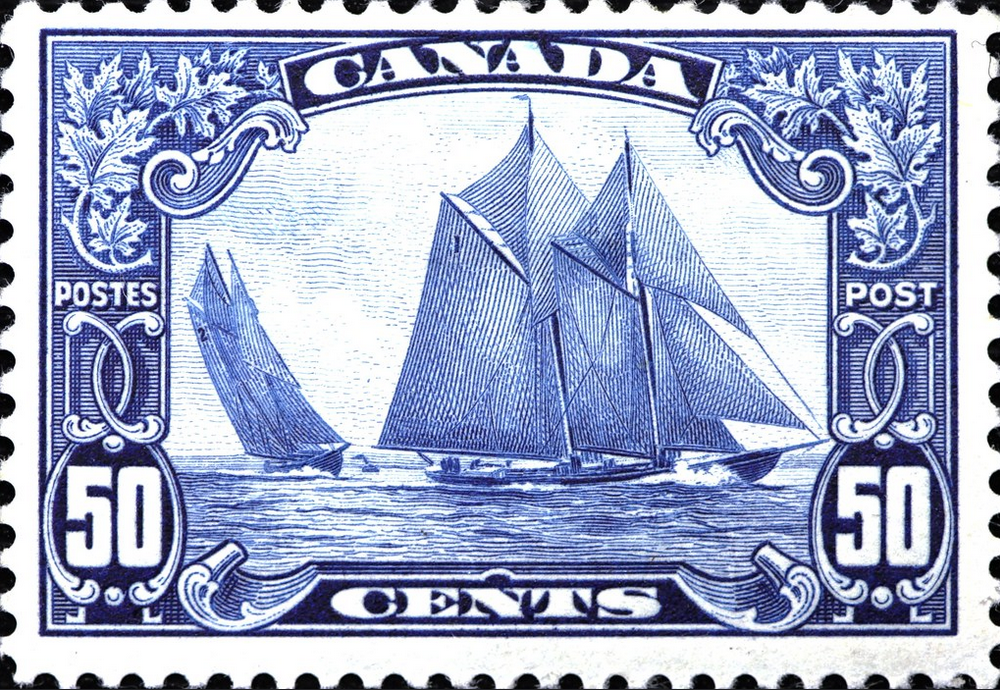
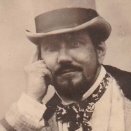
.thumb.jpeg.fc5d633a7b34428fcf19419a73d56d55.jpeg)


